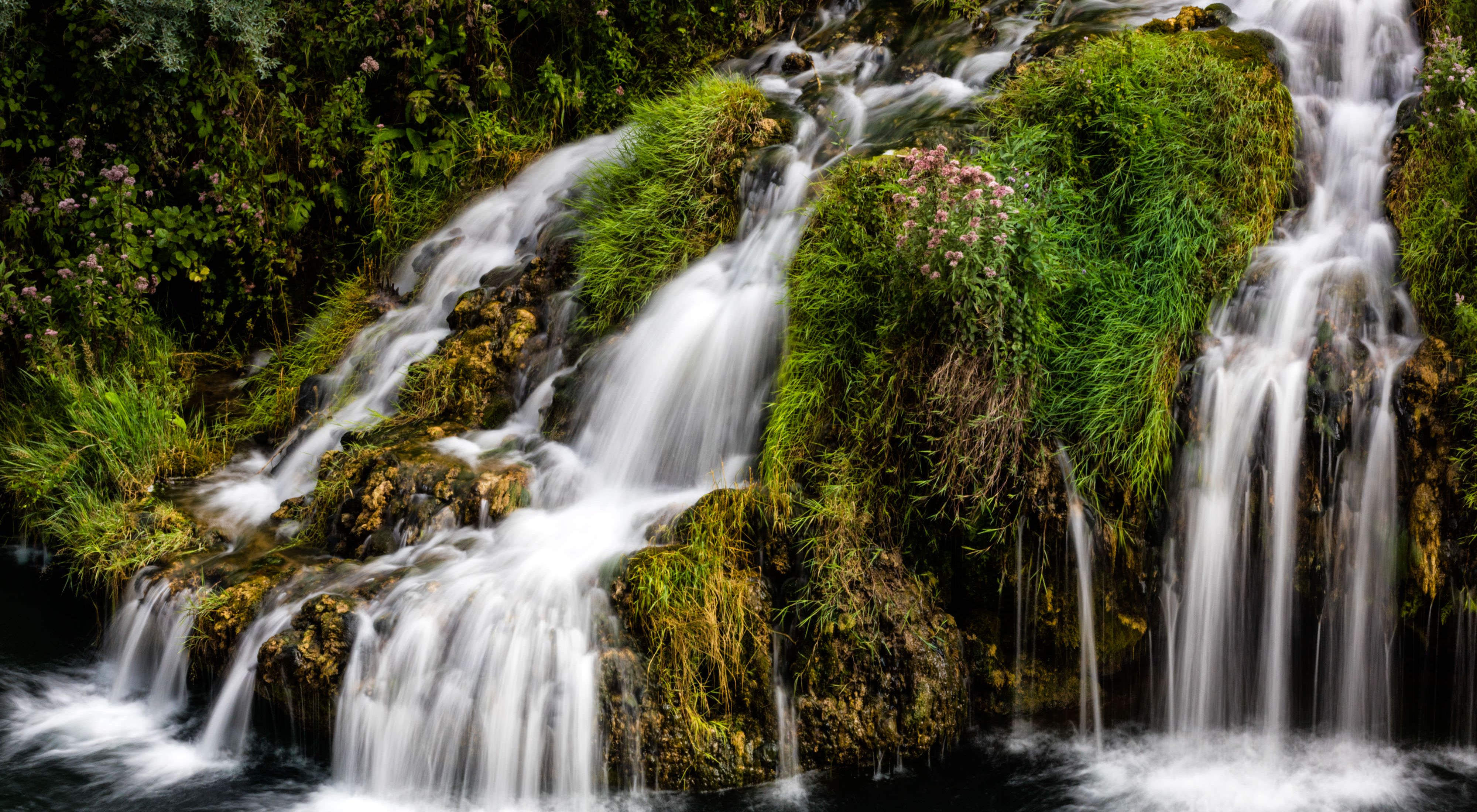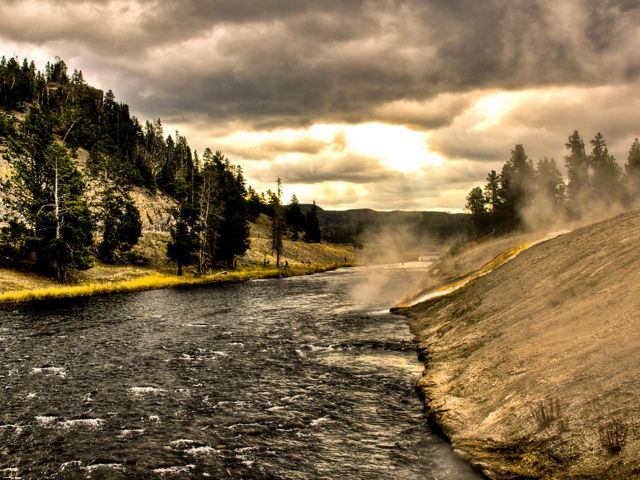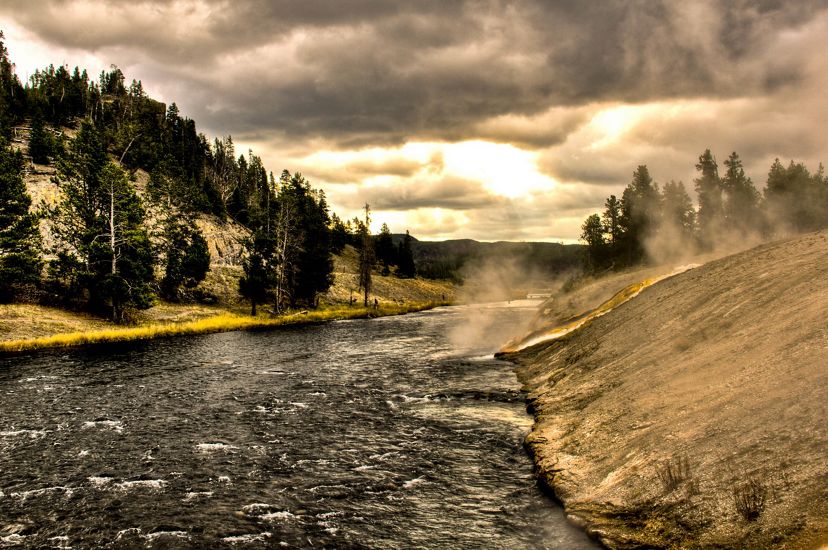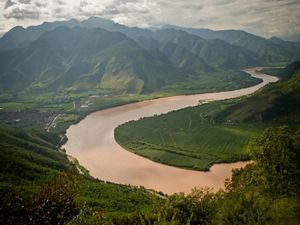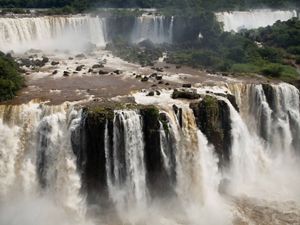Cleaner Power and Flowing Water: Finding Balance Between Smart Renewable Energy and River Protection
By Michelle Lakly, Managing Director, Saving Rivers Program
IF THERE WERE ANY LINGERING DOUBTS about just how dangerous, and imminent climate change really is, those were dispelled by recent IPCC report, which underscored the imperative of limiting temperature increases to 1.5°C above preindustrial levels. This requires achieving net-zero greenhouse gas emissions by mid-century, and to do that, the world must quickly transition to renewable energy.
And yet it’s not quite as simple—there are other considerations to keep in mind as we make this transition. As countries look to meet their renewable energy goals, we’ve seen many turn to their rivers to fill the growing energy gap. At the same time, these same rivers are expected to experience growing pressures as more flows are diverted and harnessed to meet the rising demands of industry, agriculture and communities.
TNC’s research estimate the completion of hydropower dams currently under construction and those that are planned will affect 300,000 kilometres of rivers globally. And this estimate does not account for additional construction unrelated to hydropower development, which will only serve to further fragment our world’s great river systems.
Why is this river fragmentation such a problem? Both people and nature depend on the benefits healthy rivers provide, and rivers can only remain healthy if they are laterally connected to their watersheds and flow freely from source to sea.
It’s a challenge faced by even the most environmentally progressive regions. In the European Union, for example, instruments like Water Framework Directive have yielded progress on greater water protection throughout Europe in individual Member States and on other significant environmental challenges—including climate change—at the European level.
But Europe’s last remaining free-flowing rivers lie outside of the EU, in the Western Balkans. The vibrant region is rich in biodiversity and steeped in cultural heritage. Unfortunately, these rivers are now on the brink of a hydropower development boom of global proportions, with hundreds, if not thousands, of new hydropower projects planned and under construction. If this development moves forward as planned, the region could lose its last free-flowing rivers and all the benefits they entail.
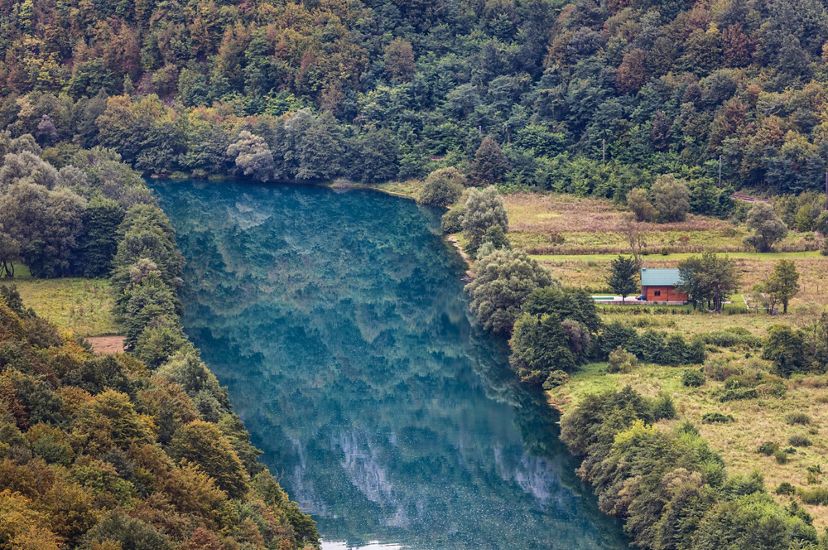
A Plan for Wild and Scenic Rivers
It’s not entirely hopeless, though. The first half of the Twentieth Century saw similar pressures on rivers in the United States. River after river was fragmented or otherwise impaired by hydropower development, flood control structures, roads, industry and pollution. Waters that once teemed with salmon and river herring were now barren. Scenic canyons full of culturally significant artefacts were submerged by reservoirs, and we were losing the rivers that made Americans proud.
Two brothers, John and Frank Craighead, had a simple idea: to protect the nation’s last outstanding rivers, just like national parks protected outstanding lands. It was championed by other renowned environmentalists and Senators, and in 1968—50 years ago this month—the National Wild and Scenic Rivers System was created by Congress.
The act states that, “Selected rivers of the Nation which, with their immediate environments, possess outstandingly remarkable scenic, recreational, geologic, fish and wildlife, historic, cultural or other similar values, shall be preserved in free-flowing condition, and that they and their immediate environments shall be protected for the benefit and enjoyment of present and future generations.”
Today, 50 years later, over 200 rivers totalling more than 12,000 miles—over 19,300 kilometers—are protected, thanks to this simple but powerful idea.
A Wild and Scenic designation is permanent and brings with it national recognition, elevated protections and the capacity and financial resources to help steward the rivers and their watershed lands.
The multi-year process to study and recommend a river for Wild and Scenic designation has its own value—it creates a constituency of people who know and care deeply about these rivers and urges them to work across sectors to address the multi-faceted challenges facing our rivers and communities. It also creates a comprehensive inventory of natural resource values and cultural and historic elements. And beyond the common goal of securing the designation, it focuses stakeholders and partners on the actions needed to advance the large-scale restoration of these rivers.
But the Wild and Scenic designation is about much more than preserving landscapes for their own sake—the laws are intended to also protect the utility of the rivers. Healthy rivers fulfil critically important functions that would otherwise need to be provided by costly grey infrastructure. These include ecosystems services like access to water for farming, flood control and water storage, and water purification in wetlands. In the U.S., nearly 84 percent of Wild and Scenic Rivers are designated for ecosystem services and other non-recreational benefits, but many also offer significant tourism and recreational opportunities that are often major contributors to local economies.
The concept of Wild and Scenic River Systems and its associated protections has since been replicated elsewhere. Canada, Australia and New Zealand have laws in place that, for certain river stretches, prevent development in order to preserve watersheds and their natural resources, preserve the cultural heritage offered by the river systems, and incorporate state and local governmental agencies in the decision-making, nominating and management process. In India, a court in the northern state of Uttarakhand ordered last year that the Ganges and its main tributary, the Yamuna, be accorded the status of living human entities.
Protecting The Blue Heart of Europe
Could a similar approach work in the Balkans? The Nature Conservancy’s expertise in renewable energy and conservation planning makes us believe this region presents an excellent opportunity to pioneer and demonstrate a sustainable model of clean energy production without compromising environmental integrity. By anticipating future energy needs and planning on a national, regional or landscape scale—rather than a piecemeal, project-by-project approach—we know that we can reduce the land and carbon footprint of renewables, safeguard ecosystem services and biodiversity, and even accelerate the region’s transition to renewable energy.
But there is only so much that can be done with charts, spreadsheets and maps. Sometimes the best way to make the case for something is to let people experience it for themselves. We recently had the honour of welcoming representatives from a number of Balkans countries to Wyoming for a study tour of Wild and Scenic Rivers in the State. Attendees heard from multiple experts about the mechanics of the Wild and Scenic Rivers Act but, more importantly, the positive impact it’s had on ecosystems, communities and economies.
It is a crucial time for rivers in Europe. We hope that what our guests saw, heard and experienced has helped to inspire a positive future for Europe’s rivers, one where energy needs are balanced with ecological integrity. And, at TNC, we will continue to work with governments, utilities, energy developers and communities as we strive to build a sustainable future where people and nature can thrive.
Enterprise Rent-A-Car Foundation generously supports the work of the Nature Conservancy to find water solutions that work for rivers and the communities that depend on them. We thank them for making the international river protection learning exchange possible.
Global Insights
Check out our latest thinking and real-world solutions to some of the most complex challenges facing people and the planet today.
